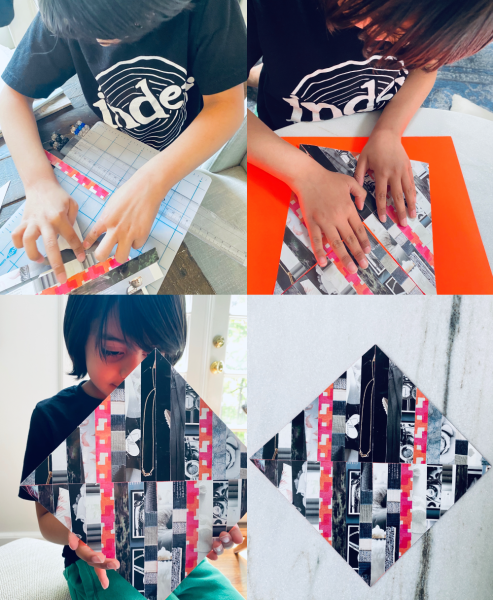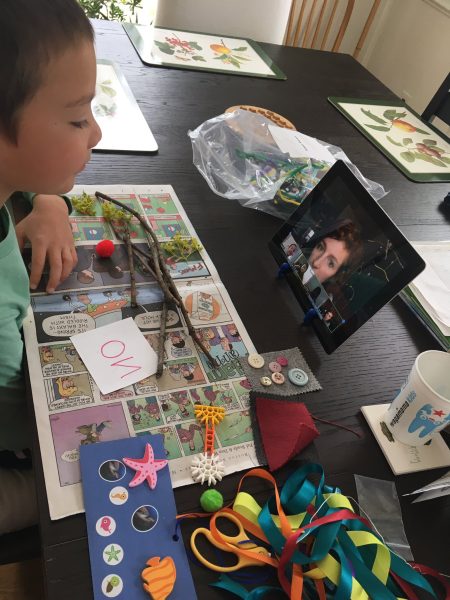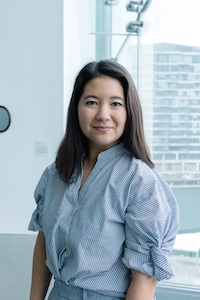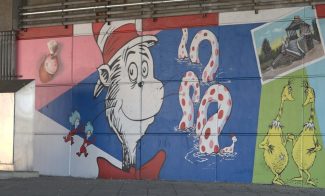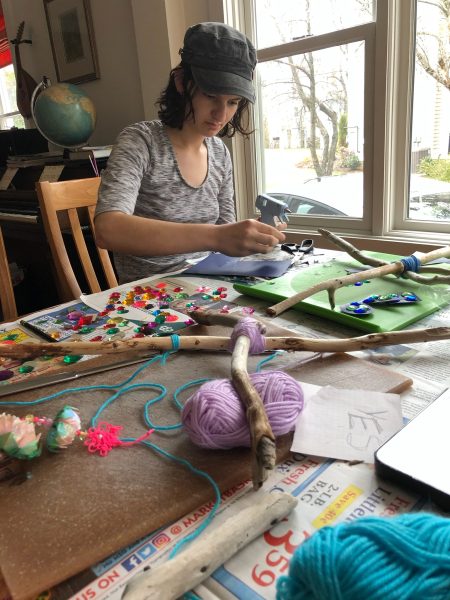
Jessie Magyar is the School and Family Programs Manager at the ICA, responsible for planning and carrying out programs including monthly Play Dates, artist installations in the Bank of America Art Lab, school vacation week workshops, gallery games, and weekly drop-in art-making activities.
While the ICA is closed, Jessie’s attention has shifted toward bringing art-making into the home, including weekly activities families can do on their own time with easily available materials, virtual Play Dates with real-time art instruction, and a community-based virtual “quilt.”
These virtual programs have become some of the ICA’s most accessed content, demonstrating how much these online activities are appreciated by families as they take on the role of teachers at home.
Here Jessie talks about the challenges and unexpected rewards of pivoting family programs from hands-on to online.
Jessie, first of all, can you describe the Virtual Quilt project and how it came about?
The Virtual Quilt project came out of the Threads of Connection Art Lab installation, a collaboration with artist Merill Comeau. As a part of the project, we invited visitors to create a quilt square in the Art Lab with the option of donating their finished piece to our community quilt. We wanted to keep the project going during the ICA’s temporary closure and so we are now asking folks to create one at home using any materials on hand and sharing it with us digitally.
Was this project always meant to have a digital component?
The digital component was only developed after the ICA decided to temporarily close due to the threat of COVID-19. However, by going virtual, we are finding that we now have an extraordinary opportunity to reach new audiences and to engage with our current audiences in a new way. It allows us to stay connected through art, even when we are apart.
One obvious change has been that people now supply their own materials as opposed to using the materials we provided in the Art Lab. This has actually resulted in really interesting, creative pieces, and I think will ultimately provide a unique reflection of the current moment.
What are some of your chief goals or hopes as you move other programming online?
Our primary goals are to stay connected with our families and to continue to provide opportunities for creativity, community, and reflection. We want to provide opportunities for families to stay active and find joy through art making, but also to help make meaning during these unprecedented times. By engaging in our online programs, we hope families feel more connected to themselves, to each other, and to the greater community.
Any silver linings in working in this new way?
It’s interesting because when I started managing family programs in July 2019, one of my primary goals was to develop an engagement plan for family audiences. Prior to the closure, we focused on in-person experiences at the ICA for families. However, in developing digital resources, I’ve now realized how important they can be in establishing family engagement. By providing resources online, we’re able to cast a greater net of opportunities. It provides flexibility and convenience (so important for families!) and opens the door for deeper engagement.
What’s the most challenging part of doing your work remotely?
The most difficult part by far, and I think many families will relate to this, is balancing and creating boundaries between home life and work life. But I also miss making art with all the visitors at the ICA! In my role, I have the unique opportunity to work on programs for teens, school groups, kids, and families, and a large portion of my work is still dedicated to facilitating classes and workshops.
Lastly, how have you been keeping busy and inspired during the quarantine?
My child certainly keeps me busy! At 18 months, it’s been really special to see him develop into a toddler. He helps me keep things in perspective and find joy in the smallest details.
Check out the Virtual Quilt and other hands-on art-making projects
ICA Kids and Family programs are supported, in part, by Vivien and Alan Hassenfeld, the Hassenfeld Family Foundation, the Willow Tree Fund, Alexion Pharmaceuticals, Inc., and Raymond T. & Ann T. Mancini Family Foundation.
